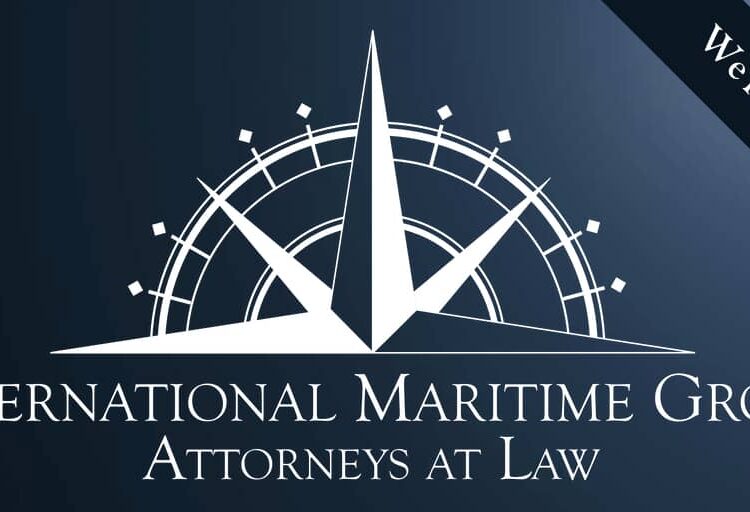In today’s competitive business landscape, small businesses often require flexible and innovative financing solutions to fuel their growth. One such solution is mezzanine debt. This hybrid form of financing offers a unique blend of benefits that can be particularly advantageous for small business owners looking to expand without diluting ownership. In this guide, we’ll explore what mezzanine debt is, its advantages and disadvantages, and how small businesses can successfully leverage it for growth.
Toc
- 1. Introduction of Mezzanine Debt
- 2. The Advantages of Mezzanine Debt for Small Businesses
- 3. Disadvantages of Mezzanine Debt
- 4. How Small Businesses Can Successfully Leverage Mezzanine Debt
- 5. Bài viết liên quan:
- 6. The Application and Approval Process
- 7. Successful Mezzanine Debt Stories
- 8. Finding the Right Lender and Navigating the Negotiation Process
- 9. Conclusion
Introduction of Mezzanine Debt
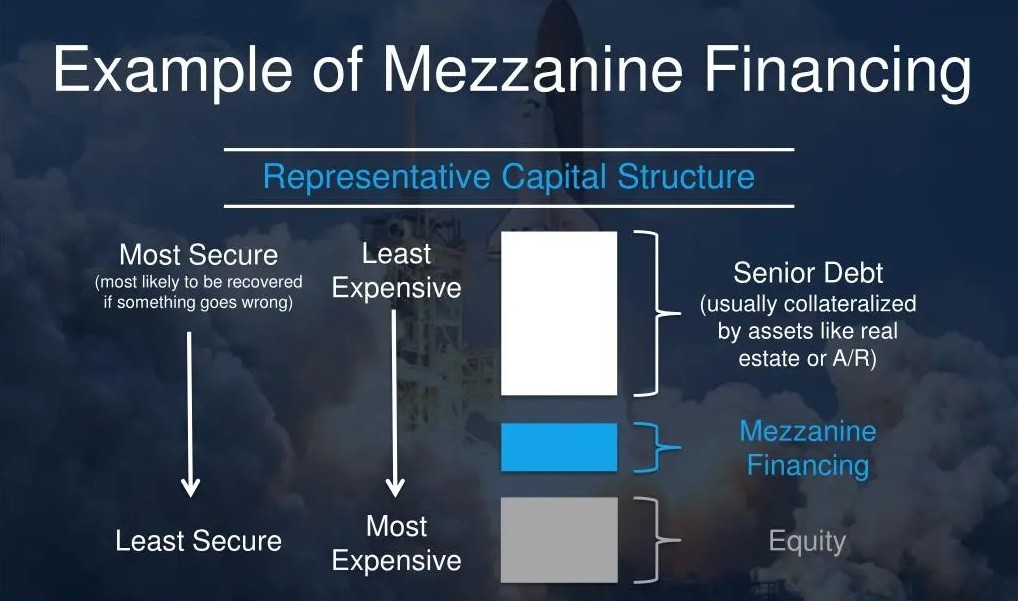
Mezzanine debt is a type of financing that sits in between traditional senior debt and equity on the capital structure. It typically takes the form of a loan with an attached equity component, such as warrants or convertible notes. The term “mezzanine” comes from the fact that it occupies a middle position on the balance sheet, ranking below senior debt but above equity.
What is Mezzanine Debt?
Mezzanine debt is a type of financing that combines elements of both debt and equity. It typically involves a loan that can be converted into equity if the borrower defaults. This hybrid nature allows mezzanine debt to offer higher returns for investors while providing borrowers with flexible financing options.
Comparison with Traditional Financing Methods
- Bank Loans: Typically secured and involve lower interest rates but come with strict repayment terms and collateral requirements.
- Equity Financing: Involves selling a stake in the company, which can dilute ownership and control but does not require repayment.
- Mezzanine Debt: Offers a higher return for investors than traditional bank loans, but does not require dilution of ownership and offers more flexibility in repayment terms.
Mezzanine debt sits between these two, offering the middle ground—higher interest rates than bank loans but no immediate dilution of ownership like equity financing.
The Advantages of Mezzanine Debt for Small Businesses
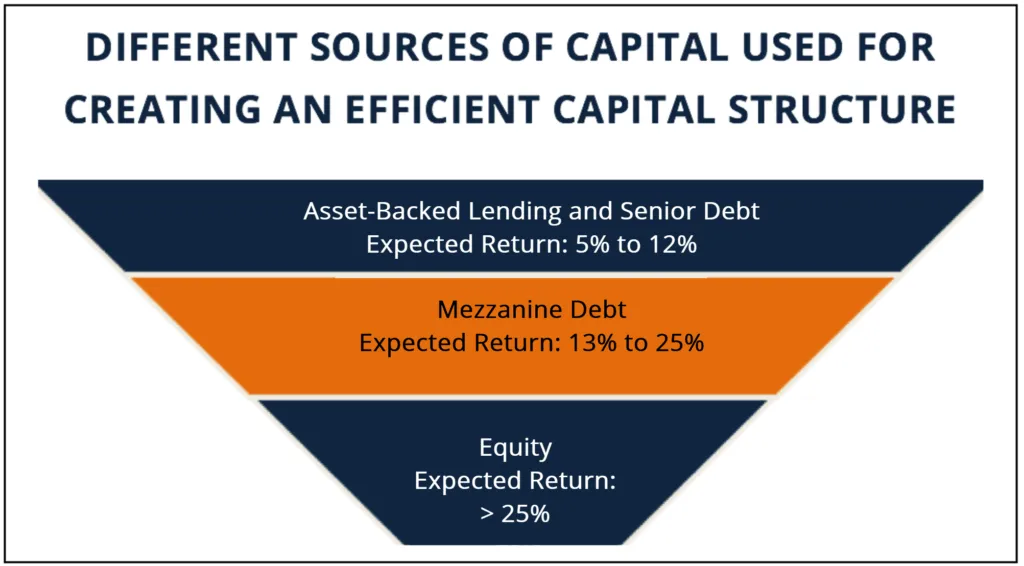
Small businesses can benefit from mezzanine debt in several ways:
Flexibility in Repayment Terms
One of the primary advantages of mezzanine debt for small businesses is the flexibility in repayment terms. Unlike traditional bank loans, which typically require fixed monthly payments over a set period, mezzanine financing often allows for interest-only payments during the initial years. This structure can provide small business owners with the breathing room they need during the growth phase, enabling them to reinvest cash flow into operations rather than directing it towards debt repayment. Additionally, the repayment schedule can be designed to align with the anticipated revenue growth, allowing businesses to pay down the debt as they achieve financial milestones. This flexibility can significantly enhance a company’s ability to scale while mitigating financial strain during critical development periods.
No Dilution of Ownership
Small business owners often hesitate to give up equity in their company, as it means surrendering a portion of control and potential future profits. Mezzanine debt offers an alternative solution by providing financing without diluting ownership. This allows small business owners to maintain full control over their company while still accessing the necessary capital for growth.
Access to Higher Amounts of Capital
As mezzanine debt is typically unsecured, lenders are willing to take on a higher risk than traditional bank loans, resulting in access to larger amounts of capital. For small businesses looking to finance significant expansion or acquisition opportunities, mezzanine debt can provide the necessary financial resources that may not be available through other financing methods.
Potential Tax Benefits
Mezzanine debt may also offer potential tax benefits for small businesses. The interest paid on mezzanine debt is typically tax-deductible, reducing the overall cost of borrowing and improving cash flow for the business.
Disadvantages of Mezzanine Debt
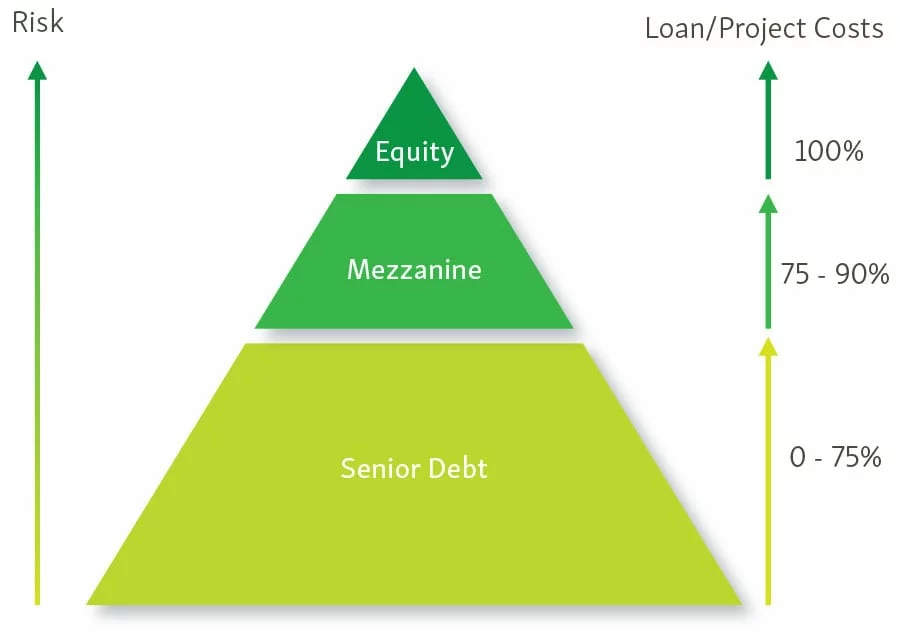
While mezzanine debt offers many advantages for small businesses, it’s important to consider the potential downsides as well:
Higher Interest Rates
As mezzanine lenders take on a higher risk than traditional bank loans, they often charge higher interest rates. This can significantly increase the cost of capital for small businesses and impact their overall profitability. It’s essential to carefully weigh the expected returns from the planned growth against the cost of borrowing before opting for mezzanine financing.
Potential Loss of Control
While mezzanine debt does not involve equity, it may come with certain covenants and conditions that can impact a business owner’s decision-making power. For example, lenders may require a seat on the board of directors or impose restrictions on future financing or dividend payments. It’s crucial to carefully review all terms and negotiate where possible to maintain control over critical business decisions.
How Small Businesses Can Successfully Leverage Mezzanine Debt
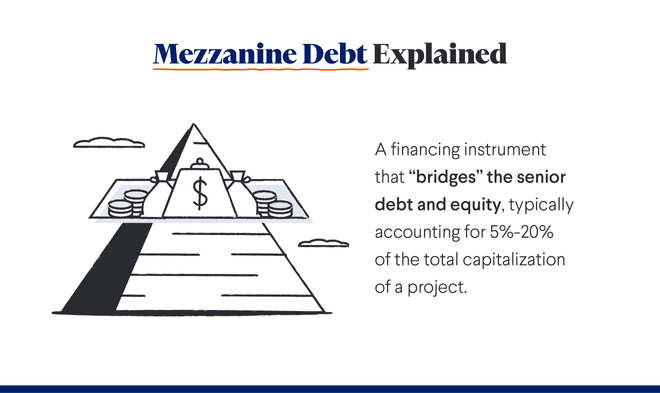
Before considering mezzanine debt as a financing option, small businesses should ensure they have a solid understanding of their financials, growth plans, and potential risks. Here are a few tips for effectively leveraging mezzanine debt:
Carefully Review and Negotiate All Terms
It is essential for small business owners to thoroughly review the terms and conditions of mezzanine debt before signing any agreements. Understanding interest rates, repayment schedules, and any covenants or restrictions is crucial to maintaining financial health. Business owners should also negotiate terms wherever possible, aiming to reduce interest rates or extend repayment periods to better suit their cash flow needs. Working with a financial advisor or legal expert can provide valuable insights during this process, ensuring all aspects of the agreement are clear and beneficial to the company’s long-term goals.
Develop a Clear Growth Strategy
Before seeking mezzanine financing, small businesses must have a clear plan outlining how the capital will be used to drive growth. This strategy should include detailed projections on revenue, anticipated expenses, and timelines for achieving specific milestones. A well-defined growth plan not only increases the likelihood of obtaining financing but also helps ensure that the business can effectively manage the obligations that come with mezzanine debt.
Maintain Transparency with Lenders
Building a solid relationship with lenders is vital for small businesses utilizing mezzanine debt. Maintaining open lines of communication and being transparent about business performance can foster trust and enable a more supportive partnership. Regular updates on progress towards growth objectives and any challenges encountered can help lenders understand the business’s circumstances and provide assistance when needed. In times of financial stress, strong communication can lead to renegotiation of terms or additional support that would not be available without such a relationship.
Monitor Financial Health
After securing mezzanine debt, small businesses should continuously monitor their financial health. This includes tracking cash flow, profitability, and key performance indicators (KPIs) to ensure that the business is on track to meet its growth targets. Regular financial assessments can provide early warnings of potential issues, allowing business owners to take proactive measures before they escalate into serious problems. This vigilant approach not only aids in managing debt responsibilities but also positions the business for future financing opportunities as it continues to grow.
Bài viết liên quan:
- https://vaytienonline.co/empower-your-growth-understanding-debt-financing-options/
- https://vaytienonline.co/mastering-smart-finance-essential-debt-management-strategies/
- https://vaytienonline.co/securing-your-golden-years-the-role-of-a-financial-advisor/
- https://vaytienonline.co/secure-your-tomorrow-the-essential-financial-planner-guide-for-professionals/
- https://vaytienonline.co/qfin-platform-revolutionizing-financial-technology-for-investors/
By following these steps, small businesses can effectively leverage mezzanine debt to fuel expansion and navigate the complexities of financing with confidence.
The Application and Approval Process
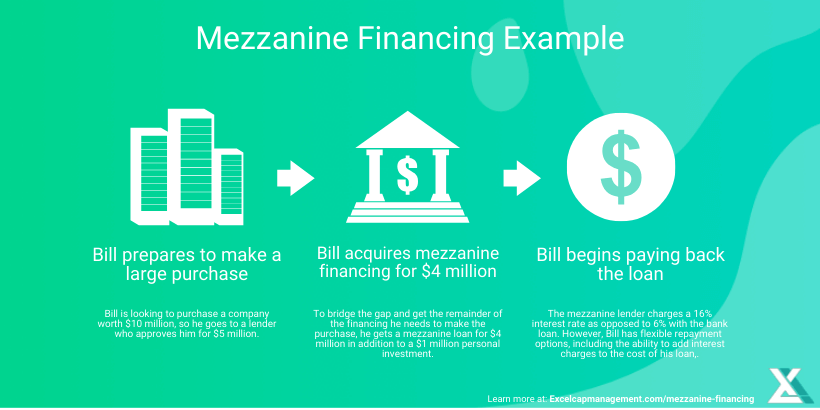
The application and approval process for mezzanine debt can vary depending on the lender and the specific terms of the agreement. In most cases, it involves a thorough review of the business’s financials, growth plans, and potential risks to determine if it is a suitable candidate for financing.
What Lenders Look For
Lenders typically evaluate several factors, including:
- Strong Cash Flow: Demonstrating the ability to meet debt obligations.
- Solid Business Plan: Outlining growth strategies and financial projections.
- Experienced Management Team: Showing a track record of successful business operations.
- Collateral: While mezzanine debt does not require collateral, lenders may still consider the business’s assets to assess its overall financial health and ability to repay the loan.
Steps to Apply
- Prepare Financial Statements: Ensure your financials are up-to-date and accurately reflect your business health.
- Develop a Compelling Business Plan: Highlight your growth strategy and how mezzanine debt will support it.
- Submit Application: Provide all required documents and be ready for follow-up questions.
- Negotiate Terms: Work with a financial advisor or legal expert to review and negotiate terms that best suit your business’s needs.
- Final Approval: Once all terms are agreed upon, the lender will conduct a final review before approving the loan.
Approval Timelines and Conditions
Approval timelines can vary but generally range from a few weeks to a couple of months. Conditions may include covenants that require maintaining certain financial ratios. Failure to meet these conditions could result in penalties or default on the loan. To avoid such consequences, it’s crucial for small businesses to continually monitor their financial health and make necessary adjustments to stay compliant with lender requirements.
Successful Mezzanine Debt Stories

Many small businesses have effectively used mezzanine debt to finance their growth and navigate transitional phases. For instance, a tech startup seeking to expand its product line turned to mezzanine financing to bolster its research and development capabilities. By acquiring the necessary capital, the startup could innovate and introduce new offerings, significantly increasing its market share in a competitive landscape.
Boutique Tech Firm
Another notable example involves a boutique tech firm that specialised in creative digital solutions. Facing an opportunity to scale its operations significantly, the company sought mezzanine financing to support an ambitious marketing campaign and enhance its technology infrastructure. By securing the necessary funds, the firm not only increased its workforce but also improved service delivery, leading to a substantial increase in client acquisition and retention. This strategic use of mezzanine debt allowed the firm to solidify its position in the market while effectively managing the associated financial responsibilities. Such success stories underline the potential of mezzanine financing for small businesses looking to thrive in competitive industries.
Lessons Learned from Successful Cases
Examining the journeys of successful businesses that have utilised mezzanine debt reveals critical insights that can benefit other entrepreneurs. First and foremost, having a clearly defined vision and execution strategy is paramount. Companies that communicated their growth plans effectively to lenders were often met with more favourable terms and quicker approval processes. This emphasis on clarity not only builds lender confidence but also sets a roadmap that the businesses can adhere to during their growth phases.
Additionally, effective risk management plays a significant role in leveraging mezzanine financing successfully. Businesses that implemented strong financial controls and regularly reviewed their operational risks demonstrated higher resilience, allowing them to navigate challenges without jeopardising their debt obligations. This proactive approach not only mitigates risks but also enhances investor trust and aids in the long-term sustainability of the business.
Ultimately, the key takeaway for any small business considering mezzanine debt is that preparation, transparency, and prudent financial management are essential components that contribute to successful outcomes and sustained growth. By learning from existing examples and applying these lessons, new ventures can strategically position themselves to reap the benefits of mezzanine financing while effectively managing the associated challenges.
Finding the Right Lender and Navigating the Negotiation Process
Choosing the right lender for mezzanine financing is crucial and can significantly impact the success of a small business. When evaluating potential lenders, businesses should consider factors such as:
Identifying Reputable Lenders
Identifying reputable lenders is the first step in securing mezzanine financing. Entrepreneurs should start by conducting thorough research to find lenders who have a proven track record in providing mezzanine debt specifically. This can include looking for reviews, testimonials, and case studies of other businesses that have successfully worked with these lenders. Additionally, networking with industry peers, financial advisors, or attending industry conferences can provide valuable recommendations and insights into potential lenders.
Assessing Lender Fit
Once potential lenders have been identified, entrepreneurs should assess the fit by considering key aspects such as the lender’s experience in the specific industry, their overall lending philosophy, and the terms they offer. Each lender may have different criteria for evaluating applications, including their preferred risk profile, funding amount capabilities, and the timeline for approval. It’s essential to align a lender’s criteria with your business’s needs and goals to ensure a smooth negotiation process.
Initial Discussions
When initiating discussions with lenders, it’s prudent to be prepared with a comprehensive presentation of your business status, growth plans, and how mezzanine debt will contribute to achieving those goals. Clear communication of your vision and financial health helps establish credibility and fosters trust between you and the lender.
Negotiating Terms
Effective negotiation is vital when securing mezzanine financing. Entrepreneurs should be ready to negotiate terms such as interest rates, repayment schedules, and any associated covenants. Bringing in a financial advisor or legal expert during this phase can help you understand the implications of various terms and advocate for conditions that align with your business strategy. It’s essential to strike a balance between securing necessary funding and maintaining flexibility for the company’s growth trajectory.
By following these steps, small businesses can increase their chances of finding the right lender and establishing a favorable partnership, setting the foundation for successful mezzanine financing that supports their growth ambitions.
Conclusion

In conclusion, mezzanine financing can serve as a powerful tool for small businesses seeking to expand and innovate in competitive markets. By understanding the intricacies of this financing option and learning from the experiences of successful companies, entrepreneurs can better navigate the challenges that come with securing and managing mezzanine debt. The key lies in thorough preparation, maintaining open lines of communication with potential lenders, and developing a robust financial strategy that anticipates risks while fostering growth.
As small businesses continue to evolve and adapt in today’s dynamic landscape, leveraging mezzanine financing strategically will not only propel their ambitions but also create a pathway for sustainable success. Embracing these lessons can help ensure that businesses not only survive but thrive, paving the way for future generations of entrepreneurs.





